In his interviews, Tom of Finland spoke of the routes he strolled in the Helsinki nights. On these walks, he came upon new people and ideas which inspired his drawings. Park cruising and quick stops in public lavatories were popular in Western Europe and the East Block, during a time that lacked safe indoor meeting spots. Many individuals seeking company developed their own nightly trails.
Duration: The walking route is about 3 kilometers (roughly 2 miles).
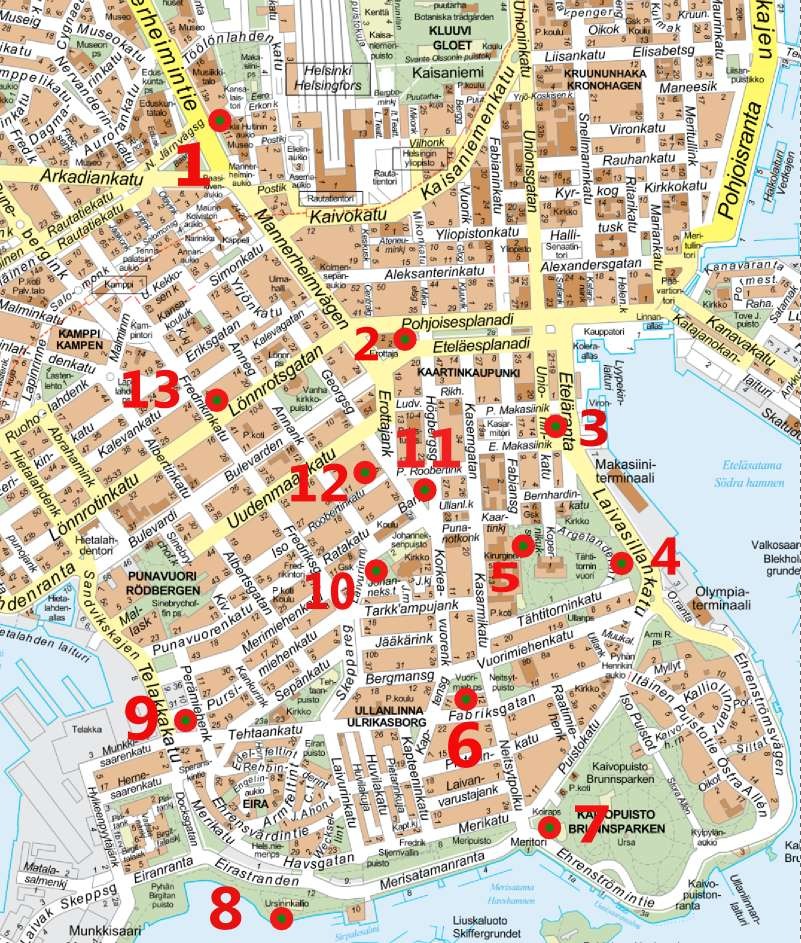
STOP 1: Starting point
The dip “Baana”, a biking and walking trail between Kiasma, Museum of Contemporary Art and Music Hall and Musiikkitalo -Helsinki Music Centre.
Now a biking and walking path, there used to be a railway tunnel at the dip between Kiasma and Musiikkitalo which runs under Mannerheimintie (Central Helsinki’s main road). Also here, was the National Railway´s commodity station and warehouses. Covered in darkness during the night, it was a perfect place for gay men to cruise. National decisions were being made just across the street in the country’s Parliament House. The dip was called Cat Alley (Kissankuja) or The Fishing Cat´s Alley (Kalastavan Kissan kuja).
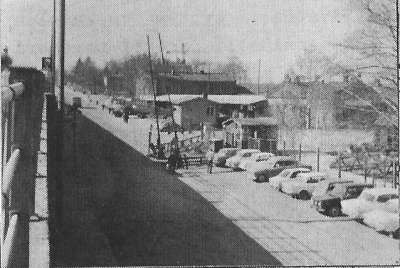
Along the stretch was a sheet metal urinal, a popular stop for some in the night. Sometimes one could see some vey expensive cars parked in front of this urinal. The urinal still existed in 1971 when decriminalization of homosexuality was erased from the penal code. The day that the law was overturned, Bibinette, a columnist for 96-magazine soaked in the night´s atmosphere at the Cat Alley. Everything was business as usual.
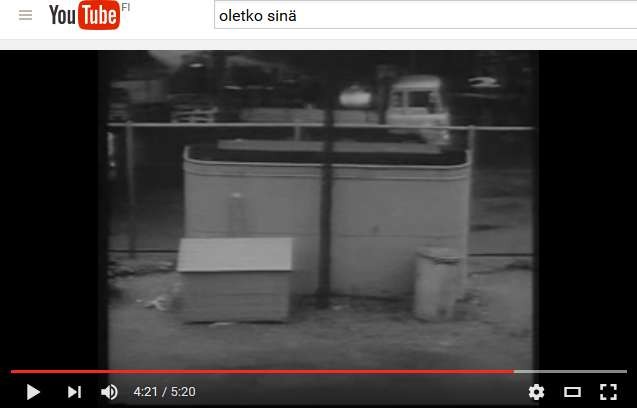
From the Cat Alley you easily find a Sokos Hotel Presidentti. Here, was a wooden shed that according to Tom, gay musicians & music students stopped by on their way from the Music Conservatory.
Stop 2: Esplanade Park a.k.a “Espa”
Adress: Eteläespalandi/Södra esplanaden - Pohjoisesplanadi/ Norra esplanaden
In the 1940’s an 1950’s, the Esplanade Park was a popular walking and meeting place for gays. The park was known by names such as “Perveskaja Ulitsa” (a twist on Russian “Perovskaya Ulitsa”, Perovskaya Street, Moscow) or Swedish-derived “Bögelund” (“Gay Grove”). Tom had colorful stories about how folks had evening gatherings in the park to mingle and giggle. According to Tom most of the men were of the effeminate type. He tried to spend time at the park but realized that if any acquaintance saw him there, his reputation would be shot. In Tom´s earlier art works you meet this effeminate man type.
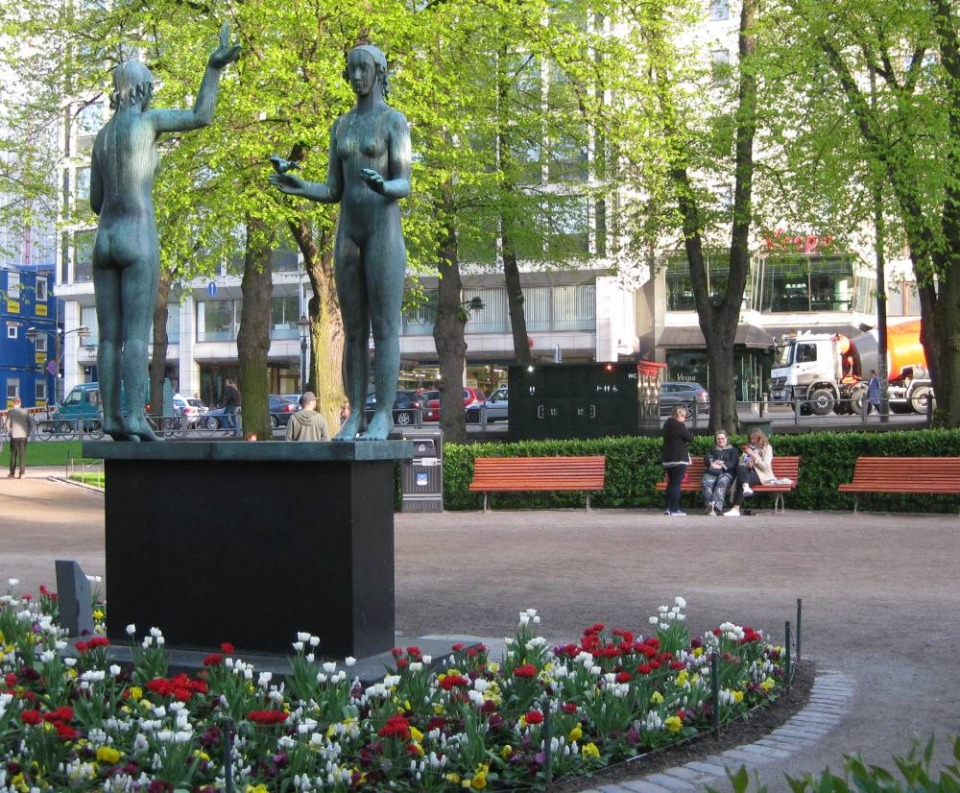
In the park there was a popular lavatory, known as “Headquarters” or “Head Office”. There was action going here already during WWII. Straight men knew this too and dared not to enter the facilities. People would walk up and down the park, at times stopping by a sheet metal shed near the Market Place /Kauppatori.

In the 1960s, Espa was no longer a meeting place. By then the action had migrated from the city centre to Mäntymäki and Laakso rocks.
Gays returned to Espa in the early 1980s when Seta (Finnish LGBTQI/Human rights advocacy organization) begun to host Liberation Day - park festivities on Espa´s outdoor stage. In the summer of 1994, demo weddings were staged by two male couples and one female couple. One of the male couples were dressed in leather head to toe.
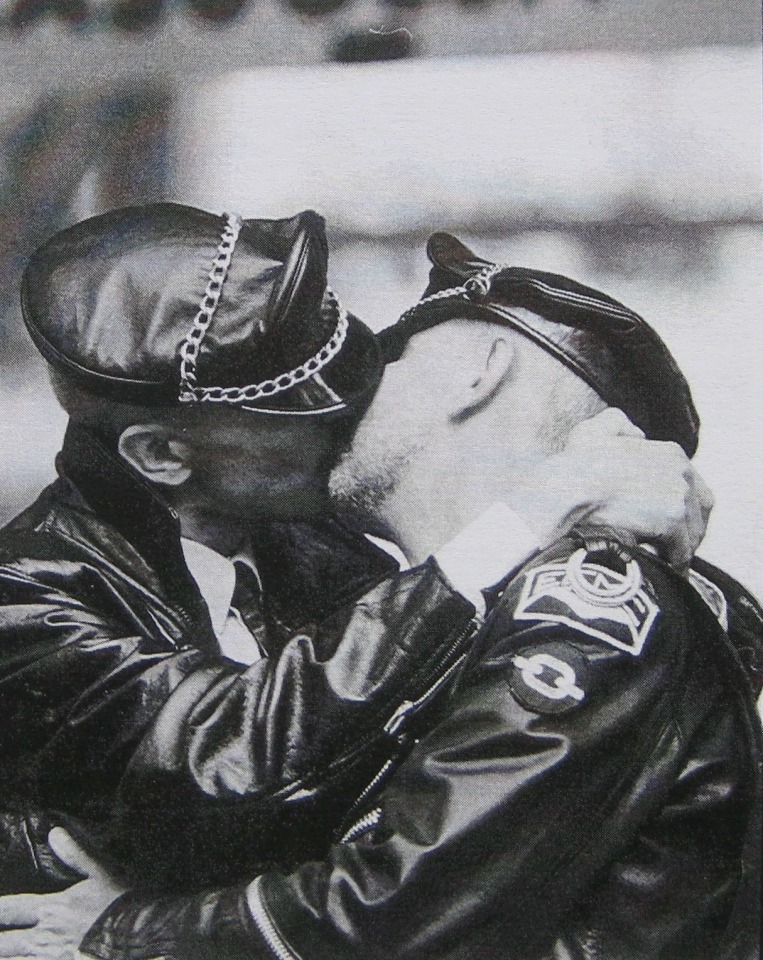
Stop 3: Palace restaurant
Adress: Eteläranta 10/Södra Kajen 1
Grand Hotel Palace, situated near the old market hall by the harbor, was completed in 1952 when Helsinki hosted the summer Olympics.
The Palace accommodated the wealthiest Olympic guests. Tom had studied the piano at the Sibelius Academy and he played in the hotel´s elegant restaurant on the second floor. He played there for years on end and Palace restaurant became his second home.
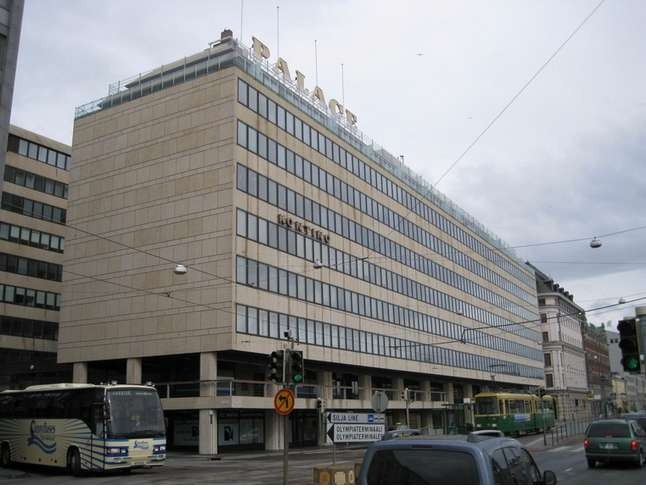
After the restaurant closed in the evening it was easy for Tom to go on his nightly walks. In the early 1950’s, he lived on Ulvilanatie, Munkkivuori but at some point he moved closer to downtown to Kalevankatu 48.
Stop 4: Observatory Hill (Tähtitorninmäki), scenery terraces
The Observatory Hill was a popular meeting spot at night.
When you walk up the Observatory Hill´s harbor side, you will notice the terrace-like design of the rocks. It was a peaceful place to sit and wait for company.
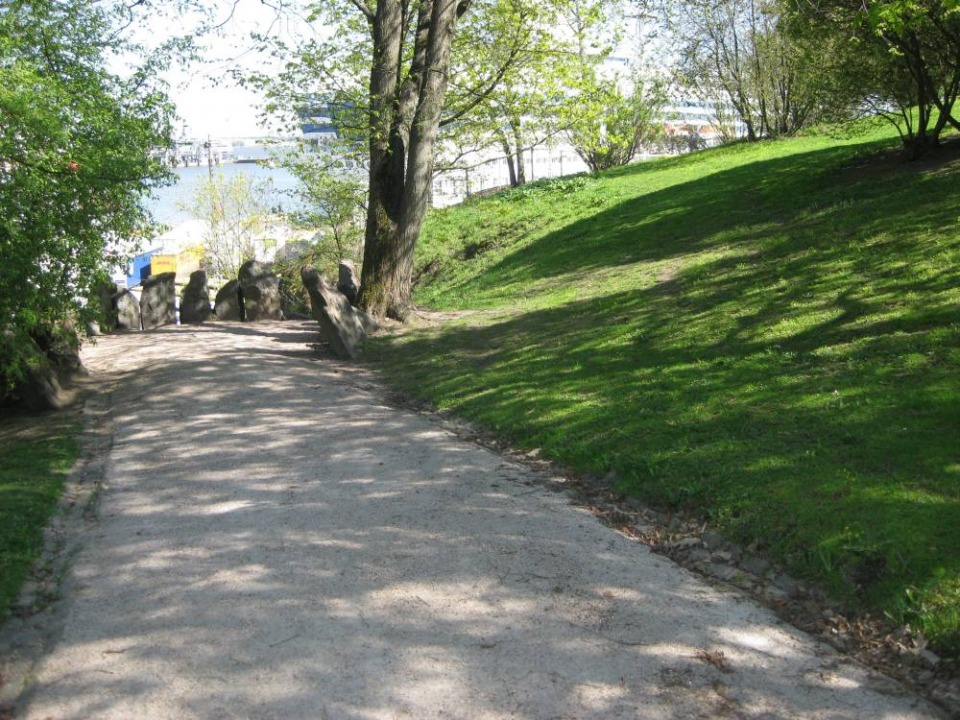
On the top flat, is the statue commemorating the shipwrecked erected during the Russian rule. St Petersburg ordered that the faces of the people on the statue must face east towards the capital of the nation, St Petersburg. However during the construction a “mistake” was made and now the statues faces west.
Down at the dock, ships left for Sweden and western Europe.
The ships and the sea could have a way of raising feelings of wanderlust and longing. In the early 1950’s, Tom belonged to that small group of Finns who had the means to travel around Europe.
The ships carried away “sexual refugees” on them as well. In the 1960s and 1970s many gays moved to Sweden looking for a more liberated atmosphere. The Swedish LGBTIQ organization RFSL had many Finnish members and its magazine publication included Finnish language pages.
Stop 5: Observatory Hill´s western slope
Between the observatory´s west end and the Swedish lyceum was Observatory Hill´s popular lavatory. The ground is still eutrophicated from excessive nitrogen. Tom spoke of how it was frequented by German soldiers during WWII and very exotic Red Army soldiers after the war, during control commission. Tom had little interest in the political stances of his nightly companions.
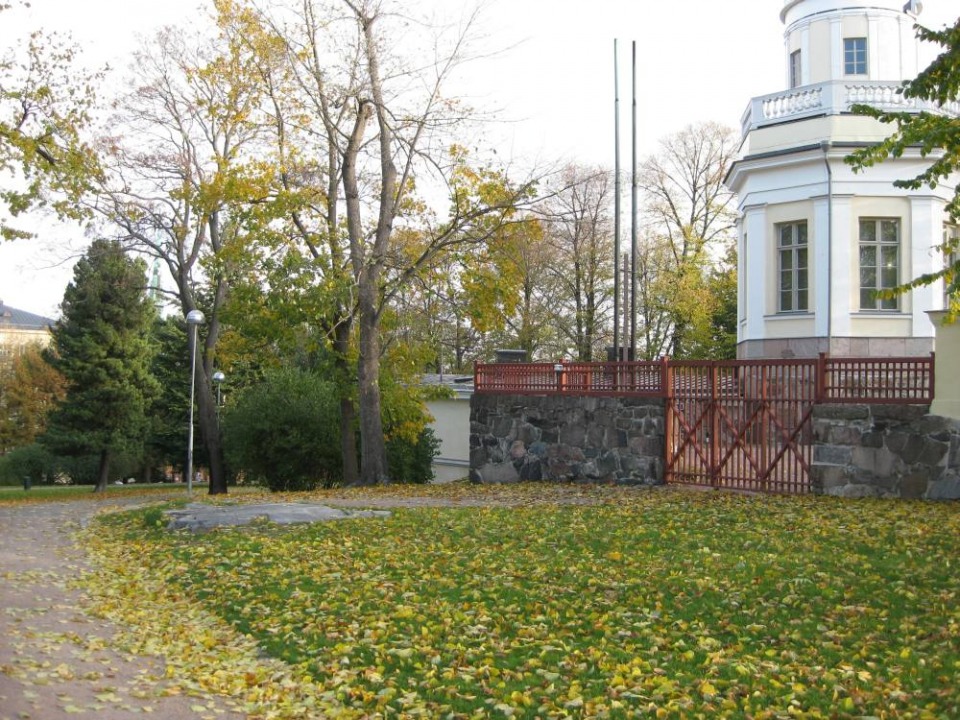
In May 2016, Observatory Hill-scenes were shot here for the upcoming Tom of Finland film. Extras consisted of e.g. members of MSC Finland (motorcycle and fetish club) who were dressed up in the look of the era. 1950s leatherwear was quite different from that of today. Police uniforms were more similar to soldier's uniforms.

The Finnish National Gallery owns Tom´s work “The Boy from Observatory Hill” (1954-55)
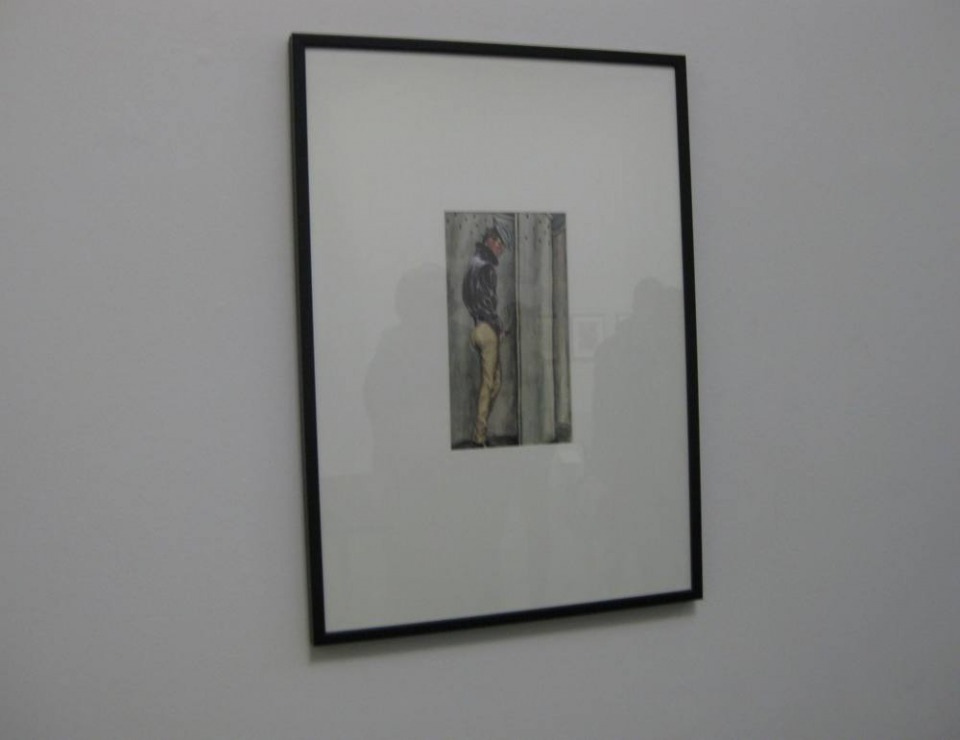
Stop 6: Tom´s house 1972-1984
Adress: Tehtaankatu 7 / Fabriksgatan 7
LIITE 3984
Tom lived a great part of his creative life at Tehtaankatu 7 stairway D. The housing association was called Sampsa. Its an early 1900s Art Nouveau building with high rooms. Tom´s room was 92 m2 (about 990 ft2). The bay window faced north. He and his life partner Veli each had their own rooms. From the northern side you can see Vuorimiehn puisto / Vuorimies Park. Tom knew the park prior to moving in the neighborhood, until 1950 the park had a shed on its´s west side. It exploded on January 14, 1950 of an apparent suicide bomb.
Former chairman of MSC Finland, Leeku Kimmel says that Tom and Veli had no mutual will. When Veli died in 1981 of throat cancer, Veli´s family cleared the apartment of almost all it´s furniture.
in 1984, the owner of apartment set out to sell it, forcing Tom to move out. Tom held a garage sale where he sold e.g. his pantings and most of his American gay magazines.
Many famous cultural figures have lived on the same block.
Stop 7: Kaivopuisto/Brunnsparken
Address: Ehrenströmintie/Ehrenströmsgatan
Kaivopuisto park were intriguing grounds for Tom. The area featured two johns and was the area to meet beefy guys. The bushes offered good cover. One of the lavatories still exists in the back of Kaivopuisto but is rarely in use.
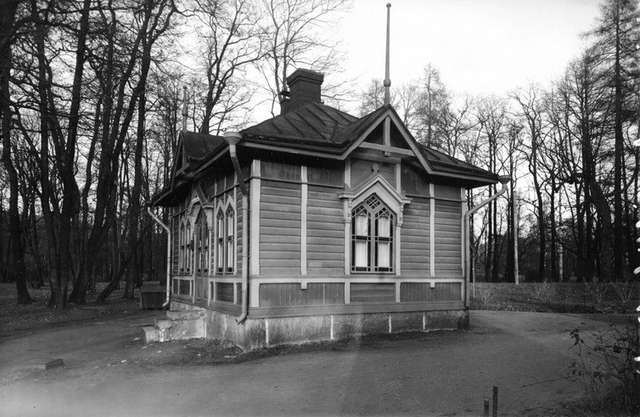
From the western corner towards west runs the street Merikatu. Yet in the early 1970s many gays said they´re going cruising to “Merikatu or Kirsikkakuisto (Cherry park)”. The area was rather unkept and the field by the shore was for storing boats. Now the scenery is completely different; cherry trees have been planted along the waterfront and the boats have moved westwards.
Stop 8: Kirsikkapuisto/Cherry Park
Address: Ursinin kalliot / Ursin Hills
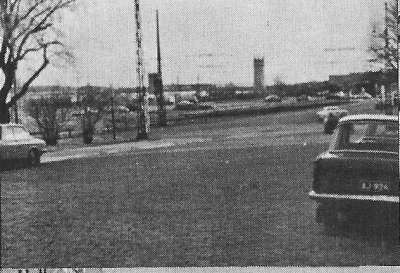
In Kirsikkapuisto where there is a statue in memory of seafarers and and those lost at sea, used to be bushes that in bloom gave out a scent of spunk. The park was a popular cruising area and the wooden john there was a good in the sense that it was easy to get close to with a car and the the door opening was big enough for a wheelchair.
The cruising ended in the in the early 1970s when the lavatory was destroyed. Now the whole area is a very popular pastime place. By the shore near Café Carusel, theres a boat that takes you to the nudist beach in Pihlajansaari.
Stop 9: MSC Club (Motor Sport Club)
Address: Pursimiehenkatu 9
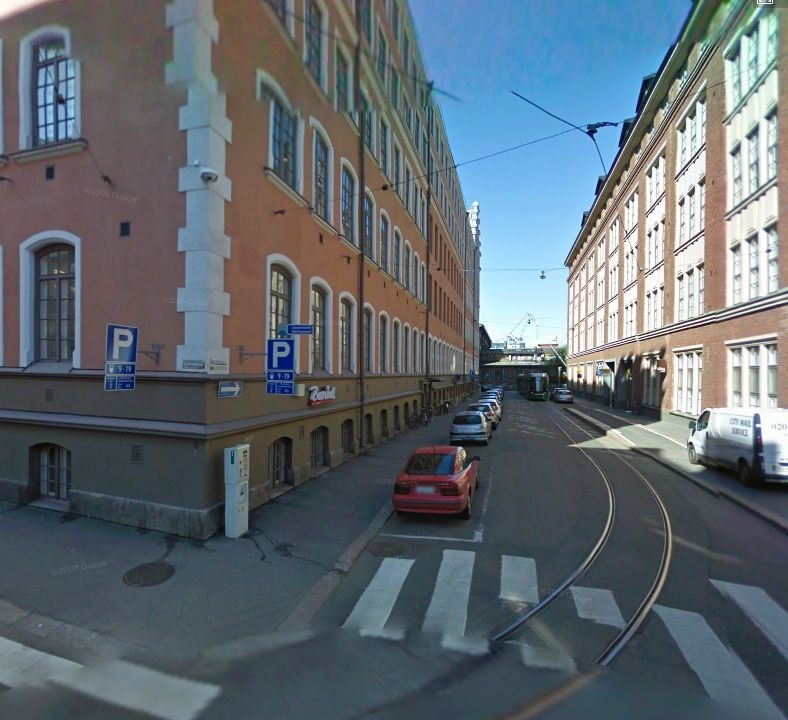
The MSC Clubs quarters were on Pursimiehenkatu in the 1990s-2000s. The place became infamous for being raided by the police in 2000.
Tom was MSC´s honorary chairman. In 1977 he met MSC´s founders Leeku Kimmel on Merikatu and joined the club immediately. Tom never made it to the Pursimiehenkatu quarters but a couple of times did visit the earlier quarters in the Sörnäinen district. Everyone remembers him as a positive and pleasant gentleman. He was always dressed to the code. In the 1980s when he returned from his winter stays in L.A., someone was always welcoming him at the airport, sometimes a bigger group, sometimes even a biker troupe.
MSC Finland upholds Tom´s legacy.
Stop 10: Johannes´s sport field
Address: Merimiehenkatu 2/Sjömasgatan 2
Near Church of Johannes, at both ends of the sport field were lousy sheet metal johns, few bothered to visit there.

Stop 11: Kultakauha restaurant
Address: Ratakatu 1/ Bangatan 1
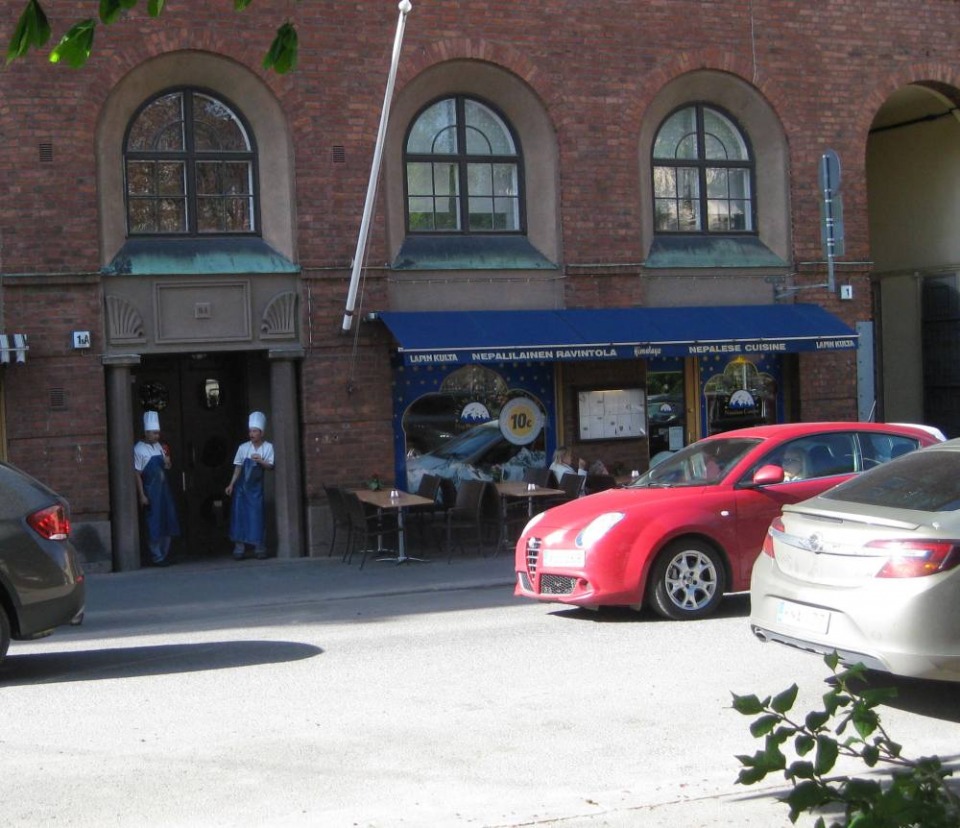
The owners of Kultakauha restaurant were gay and allowed the MSC Club to hold it´s monthly meetings there. According to stories, it was here that the club planned its Stockholm visit. In December 1977 SLM Stockholm (Swedish fetish club) held an event called “December Plot”. At the Stockholm event Tom drew pictures and told stories, his popularity was immense.
Tom had also designed a puppet/dummy that´s essential body parts were mobile. Modern dance legend Jorma Uotinen arrived from Paris and performed at the event.
Sometimes Tom brought his film projector and USA-ordered 8 mm reels to the restaurant. Sometimes the films he had ordered from abroad were a disappointment, e.g. once he ordered a “pool film” and instead of being action at a pool, it was a film featuring a game of pool (pocket billiards in USA).
Tom´s first visit to the USA was in 1978.
Stop 12: Iso Roobertinkatu /Stor Robertsgatan and Dianapuisto/Diana park
Address: Iso Roobertinkatu 3 / Stor Robertsgatans 3
At the start of “Iso Roba” Iso Roobertinkatu in the inner yard was Finland´s first gay bar Gay Gambrini, it opened in July 1984.
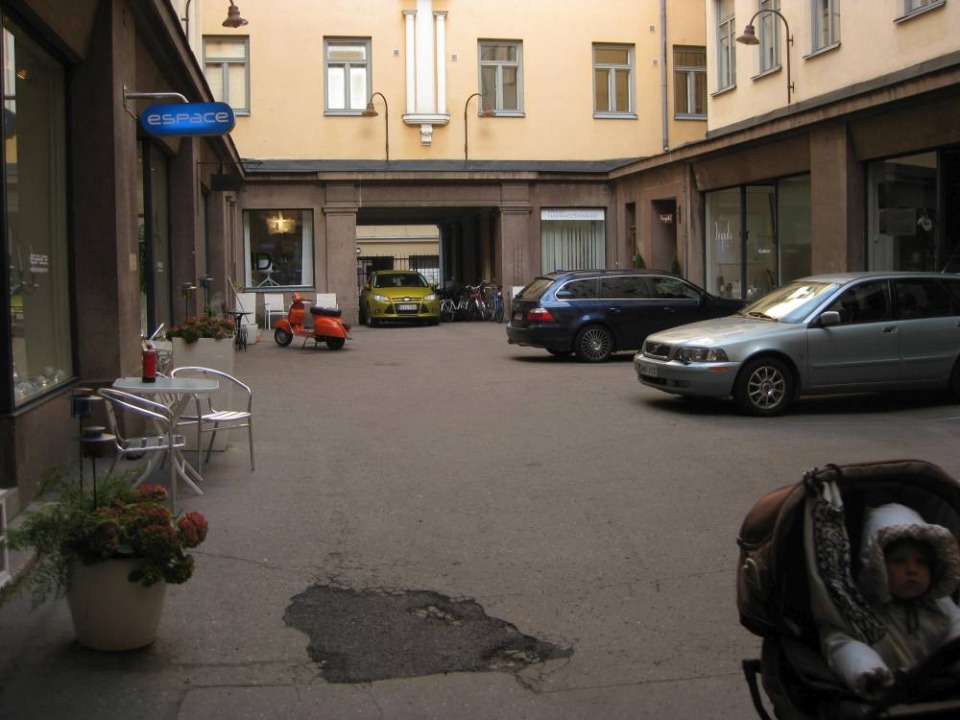
A section of the bar was reserved for “Real Men”, it was called the Company Bar. In the early days Wiki, Tom´s dear friend and aid worked there as a bar tender. Wiki was Tom´s last personal assistant in 1991.
Every now and then MSC Finland organized leather parties at Gay Gambrini. The participants had self-produced shows and little means. Everything was made by voluntary work. Nowadays its very different; theres a lot of funds and European leather and fetish clubs compete who has the best accessories, the best parties and showier shows.
At the corner of Iso Roobertinkatu and Dianapuisto there was a john that Tom checked out at times.
Compared to today Iso-Roobertinkatu looked very different. The street was very cramped and tram 3 rode through it. “IsoRoba” turned into a pedestrian street in 1985 and there tram track was moved to Fredrikinkatu.
In the west end of the street was one important antique book store that already in the 1960s sold the latest and uncensored gay magazines from Denmark. These magazines were the first to feature Tom´s work to the Finnish audience.
Stop 13: Tom´s last home
Address: Fredrikinkatu 43/ Fredriksgatan 43

1986 Tom found a spacious apartment in an art nouveau building in the corner of Lönnrotinkatu and Fredrikinkatu. The 4th floor apartment featured 3 large arched windows and two balconies. Although outwardly everything looked fine, longtime friend Tuomo noticed that Tom´s health was deteriorating. Because of a worsening lung disease, Tom no longer travelled to the USA after 1988. Friends helped out but more consistent assistance was sought after. Gay Gambirini staff helped out. Tom´s last assistant was Wiki. They developed a warm friendship and Tom drew a famous portrait of Wiki with his iroquois haircut.
During his last year, Tom´s archives were transferred to the Tom of Finland Foundation in Los Angeles. After all there was a danger that Tom´s work could end up in the garbage after his passing. Wiki´s assignment was to be the courier.
News of Tom´s passing came out on November 7, 1991. He was found lying on the floor of his apartment and resuscitation didn’t help anymore.
MSC Finland´s club evening the next day was held in a solemn atmosphere, a candle burned through out the night in Tom´s memory.
Reprinting and translation to other languages permitable.
Source must be noted:
http://ranneliike.ne
and this articles dress:
http://ranneliike.net/teema/tom-of-finlandin-oinen-kavelyreitti?aid=12357